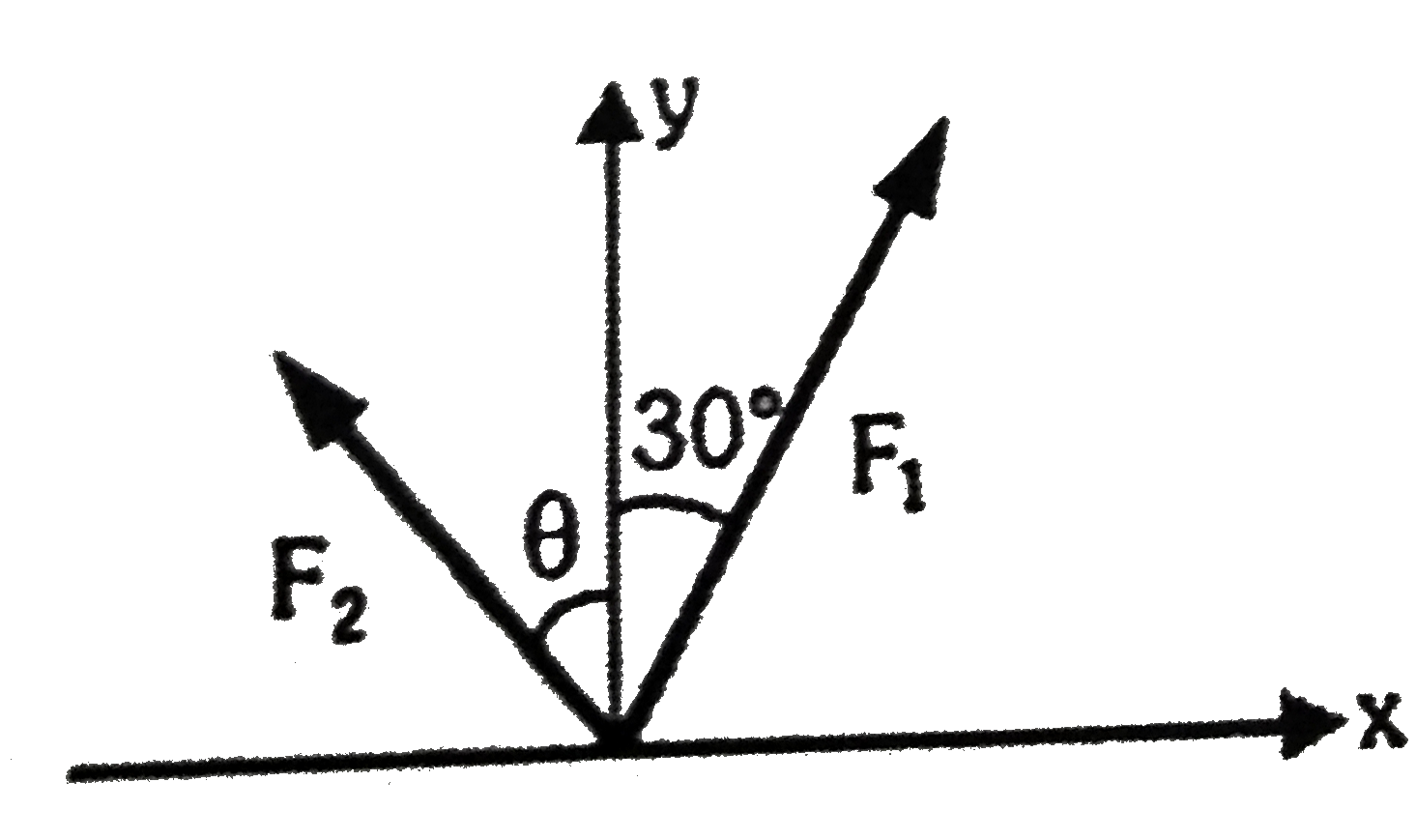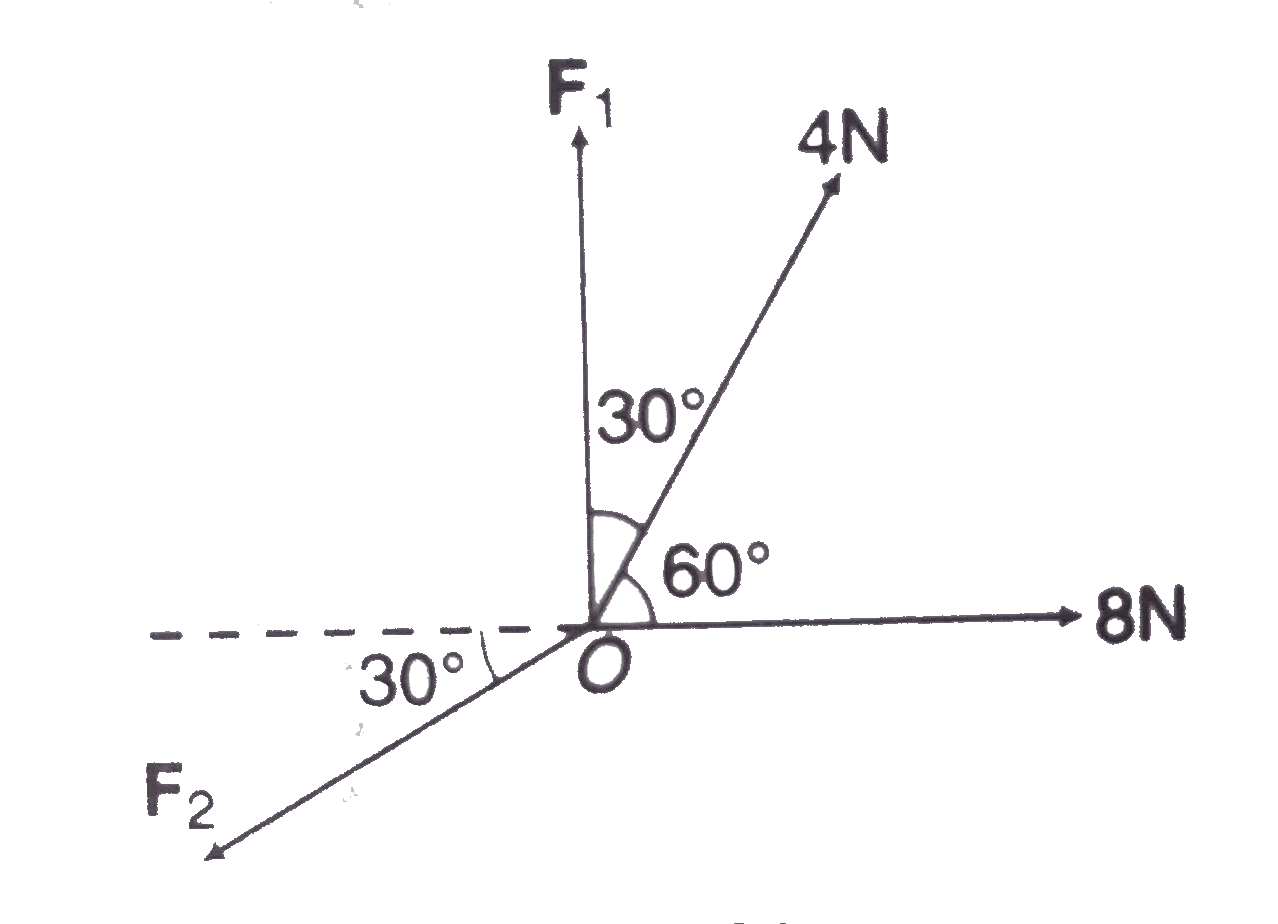In the figure, F1 and F2, the two unkown forces give a resultant force of 80√3N along the y-axis. It is required that F2 must have minimum magnitude. Find tht magnitude of F1 and F2
 Solution in Gujrati
Solution in Gujrati
The correct Answer is:160N, 80N
Step by step video & image solution for In the figure, F_(1) " and " F_(2), the two unkown forces give a resultant force of 80sqrt(3)N along the y-axis. It is required that F_(2) must have minimum magnitude. Find tht magnitude of F_(1) and F_(2) by Physics experts to help you in doubts & scoring excellent marks in Class 12 exams.
Topper's Solved these Questions
- BOOK - ALLEN CHAPTER - UNIT & DIMENSIONS, BASIC MATHS AND VECTOR EXERCISE - Exercise (O-1) Single Correct Type Questions.37videos
UNIT & DIMENSIONS, BASIC MATHS AND VECTOR
- BOOK - ALLEN CHAPTER - UNIT & DIMENSIONS, BASIC MATHS AND VECTOR EXERCISE - Exercise (O-1) Multiple Correct Type Questions.3videos
UNIT & DIMENSIONS, BASIC MATHS AND VECTOR
- BOOK - ALLEN CHAPTER - UNIT & DIMENSIONS, BASIC MATHS AND VECTOR EXERCISE - Exercise (S-1)22videos
UNIT & DIMENSIONS, BASIC MATHS AND VECTOR
- BOOK - ALLEN CHAPTER - TEST PAPERSEXERCISE - MATHS1videos
TEST PAPERS
- BOOK - ALLEN CHAPTER - WAVE OPTICSEXERCISE - Exercise 2 (Previous Year Questions)7videos
WAVE OPTICS
Similar Questions
The dimensional formula for which of the following pair is not the same ?
06:34View SolutionWhich of the following statement about the sum of the two vectors →A and →B, is/are correct ?
03:58View SolutionA particles is in a unidirectional potential field where the potential energy (U) of a particle depends on the x-coordinate given by Ux=k(1−cosax) & k and 'a' are constant. Find the physical dimensions of 'a'&k.
07:48View SolutionIf complex number z(z≠2) satisfies the equation z2=4z+|z|2+16|z|3, then what is the value of |z|4 ?
01:47View SolutionElectromagnetic waves are transverse is nature is evident by
02:29View SolutionAn object is in equilibrium under four concurrent forces in the direction shown in figure. Find the magnitudes of F1 and F2
 View Solution
View SolutionWhen forces F_(1) , F_(2) , F_(3) are acting on a particle of mass m such that F_(2) and F_(3) are mutually prependicular, then the particle remains stationary. If the force F_(1) is now rejmoved then the acceleration of the particle is
00:53View SolutionTwo forces F_(1) and F_(2) are acting at a point, whose resultant is F .If F_(2) is doubled F is also doubled. If F_(2) is reversed then also F is doubled. Then F_(1):F_(2):F is
02:16View SolutionSix forces are acting on a particle. Angle between two adjacent force is 60∘. Five of the forces have magnitude F1 and the sixth has magnitude F2 . The resultant of all the forces will have magnitude of:
04:26View SolutionGiven F1=1,F2=3andFn=Fn−1+Fn−2 then F5 is
04:48View SolutionThe resultant of two forces F_(1) and F_(2) is P. If F_(2) is reversed , then resultant is Q . Then the value of (P^(2)+Q^(2)) in terms of F_(1) and F_(2) is
02:40View SolutionGiven F1=1,F2=3andFn=Fn−1+Fn−2 then F3 is ____.
05:09View Solutionबल F1,F2 और F3 एक m द्रव्यमान के कण , पर इस प्रकार कार्य कर रहे हैं कि F1 और F2 परस्पर लंबवत हैं किंतु कण स्थिर रहता है । यदि बल F1 को हटा दिया जाये तो कण का त्वरण होगा -
View SolutionTwo forces of mangitude F_(1) and F_(2) are acting on an object.The magnitude of the net force F_(n e t ) on the object will be in the range.
05:35View SolutionThree forces simultaneously in the equilibrium of the object F_(1), F_(2) , and F_(3) Is charged. If F_(1)=3N , Along the positive x-axis, F_(2)=4N , Along the positive y-axis, then the third force F_(3) is
04:05View Solutionदो सदिशों F1 व F2 का परिमाण समान है जिसका मान F है। यदि |F_(1) * F_(2)| = |F_(1) xx F_(2)| " तब " |F_(1) + F_(2)| बराबर है
03:39View Solution

